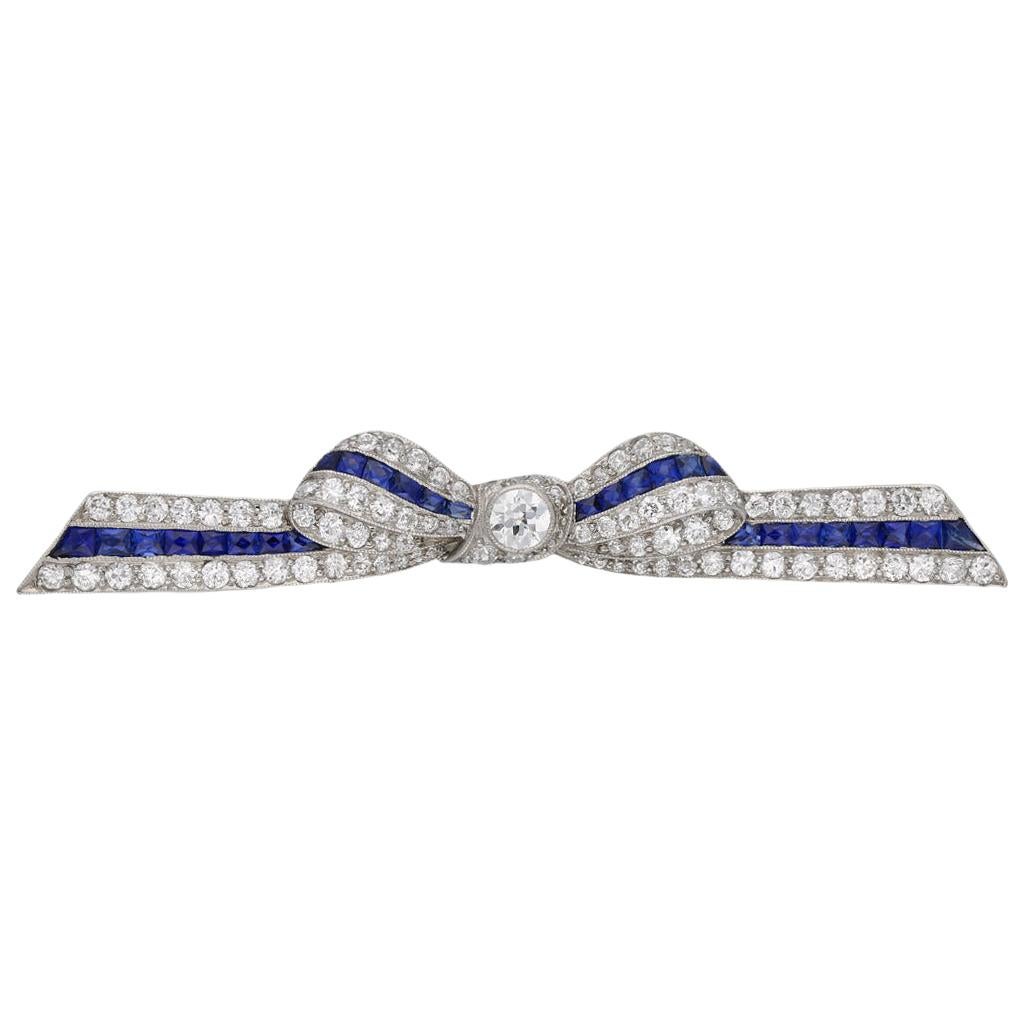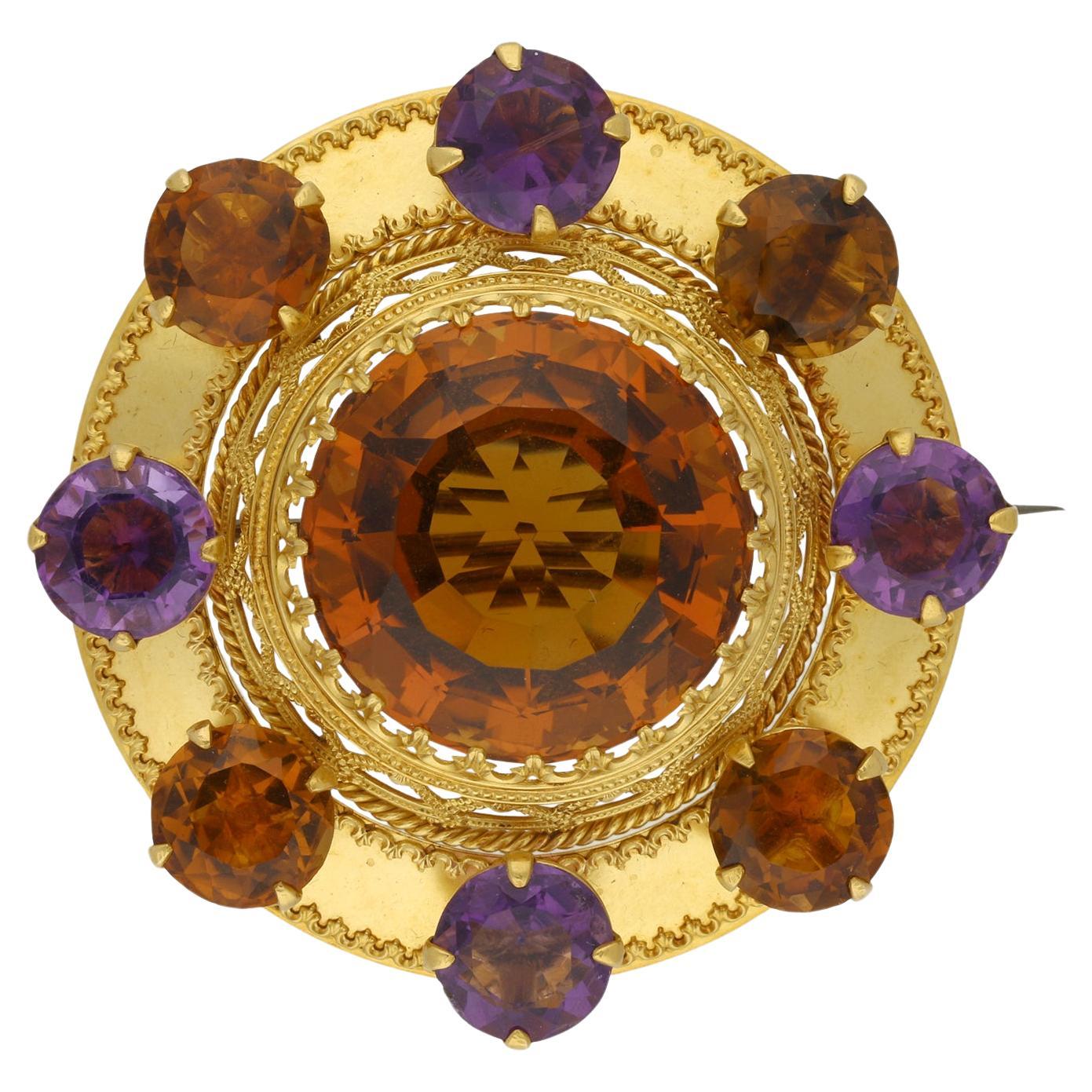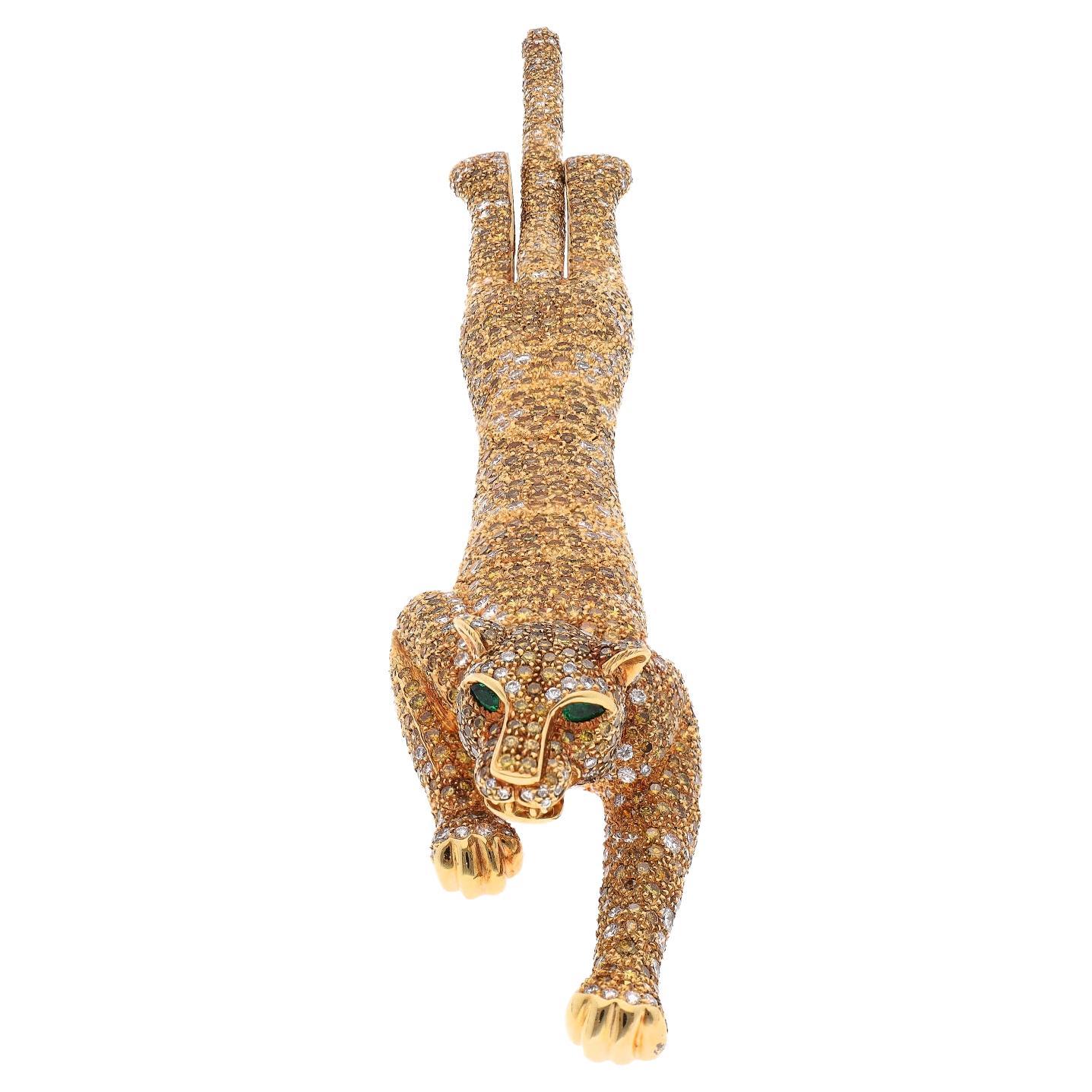Items Similar to Costume Jewelry Cartier Style Large Diamond Red Carpet Brooch by Clive Kandel
Want more images or videos?
Request additional images or videos from the seller
1 of 5
Costume Jewelry Cartier Style Large Diamond Red Carpet Brooch by Clive Kandel
About the Item
Edwardian Cartier Style Large Faux Diamond Red Carpet Collector Costume Jewelry Brooch
Superb large 4-inch hand set CZ in rhodium sterling antique swag and moving pearl set brooch. Inspired by museum-worthy and collector antique jewels, our one-of-a-kind elegant brooch will stand out as the most beautiful jewel in any room. Made by fine jewellers, the handset piece has seven moving parts that shimmer away as you move—three inches across and 4 inches deep.
- Creator:
- Metal:Sterling Silver
- Stone:Diamond
- Stone Cut:Brilliant Cut
- Style:Belle Époque
- Place of Origin:Europe
- Period:21st Century
- Date of Manufacture:2010
- Condition:
- Seller Location:New York, NY
- Reference Number:1stDibs: LU51921120212
About the Seller
5.0
Vetted Seller
These experienced sellers undergo a comprehensive evaluation by our team of in-house experts.
Established in 1983
1stDibs seller since 2013
541 sales on 1stDibs
Typical response time: 2 hours
- ShippingRetrieving quote...Ships From: New York, NY
- Return PolicyThis item cannot be returned.
More From This SellerView All
- Cartier Inspired Costume Jewelry Large Diamond Sterling Bow Pin by Clive KandelBy Magnificent Costume JewelryLocated in New York, NYCartier Inspired Garland Style Large CZDiamond Sterling Bow Pin Marie Antoinette Collection garland style large faux diamond bow pin micro pave cubi...Category
2010s Canadian Belle Époque Brooches
MaterialsDiamond, Sterling Silver
- Art Deco Cartier Style Finest Faux Pearls Diamante Sterling BraceletBy Magnificent Costume JewelryLocated in New York, NYCartier Style Art Deco Finest Faux Pearls Diamante Sterling Bracelet 7.5 inches long by 1.75 inches wide. Hand silk knottedCategory
21st Century and Contemporary American Art Deco Beaded Bracelets
MaterialsPearl, Sterling Silver
- Art Deco Vintage Costume Jewelry Onyx Moonstone Diamanté Pearl Chain NecklaceBy Magnificent Costume JewelryLocated in New York, NYArt Deco Vintage Costume Jewelry Onyx Moonstone Diamanté Pearl Chain Necklace Sterling Rhodium Pendant Elegant Art Deco style Black...Category
1990s North American Art Deco Pendant Necklaces
MaterialsCrystal, Moonstone, Onyx, Pearl, Sterling Silver
- Costume Jewelry Lab Grown Blue Color Sapphire CZ Diamond Ring by Clive KandelBy Magnificent Costume JewelryLocated in New York, NYLab Grown Royal Blue Kashmir Color 12 Carat Sapphire CZ Diamond Ring set in Palladium clad sterling. The most realistic and gorgeous Royal Blue colour...Category
21st Century and Contemporary American Contemporary Cocktail Rings
MaterialsDiamond, Sapphire, Sterling Silver
- Art Deco Costume Jewelry Bergdorf Goodman Sapphire Necklace by Clive KandelBy Magnificent Costume JewelryLocated in New York, NYArt Deco Style Costume Jewelry Bergdorf Goodman Old Stock French Faux Sapphire Diamante Rhodium Sterling Rondel Torsade Necklace This exquisite chic, one-of-a-kind French faux gorgeo...Category
21st Century and Contemporary French Art Deco Beaded Necklaces
MaterialsDiamond, Sapphire, Rhodium, Sterling Silver
- Tiffany Style Diamante Vintage Handmade Faux Pearls Sterling Twist NecklaceBy Magnificent Costume JewelryLocated in New York, NYBergdorf Goodman Vintage Japanese Faux Angel Skin Shade Pearls Diamante Sterling Twist Necklace Art Deco Style Multi Twist CZ Sterling Necklace Faux Japanese...Category
21st Century and Contemporary American Art Deco Beaded Necklaces
MaterialsPearl, Sterling Silver
You May Also Like
- Vintage Ruby Onyx and Diamond Classic Car BroochLocated in London, GBHere we have a superb vintage brooch. The piece has been crafted from 18ct yellow gold into the shape of a classic car from the 1930s. Automobiles of the 1930s exhibited many notable...Category
Vintage 1930s Brooches
MaterialsDiamond, Onyx, Ruby, Gold, Yellow Gold, Enamel
- Marcus & Co. Sapphire and Diamond Bow Brooch, American, circa 1935Located in London, GBSapphire and diamond bow brooch by Marcus & Co, American, circa 1935. A yellow gold and platinum bow form brooch set with one central row of twenty eig...Category
Vintage 1930s American Art Deco Brooches
MaterialsDiamond, Sapphire, Platinum
- John Brogden Shell Cameo Brooch and Earrings, English, circa 1870By John BrogdenLocated in London, GBAntique shell cameo brooch and earrings by John Brogden, English, circa 1870. A yellow gold suite of jewellery, the brooch composed of a horizontally situated oval Bull’s Mouth shell cameo of the Greek goddess Selene riding a serpentine dragon in a rubover collet setting, encircled by a conforming frame of gold beading and twisted gold wire punctuated with four gold palmette form plaques engraved and decorated with dark blue enamel and placed at the cardinal points, the reverse mounted with a hinged pin and scroll clasp, the earrings each composed of a vertical oval Bull’s Mouth shell cameo engraved with a bust length portrait of Selene with crescent-set headdress, encircled by a conforming frame matching that of the brooch with the addition of a pendant decoration composed of a horizontal bar of gold beading and twisted gold wires suspending gold link chains graduated from centre and ending in conical gold elements, the reverses mounted with French wire fittings, all in a fitted red leather case, the interior marked ‘FIRST CLASS PARIS MEDAL/ 1855.1867.1851/ PARIS FIRST CLASS & LONDON PRIZE MEDALS/ JOHN BROGDON/ Goldsmith/ MANUFACTORY/ 16, Henrietta St. Covent Garden/ London’. The cameo—defined as a gem, usually either a mineral or a shell, upon which a design has been carved in relief—is believed to have originated in Hellenistic Greece, during the third century BC. These miniature sculptures, at that time confined to the medium of hardstone, are thought to have been made with the primary purpose of personal adornment. The same practice of mounting cameos in jewellery was then continued by the Ancient Romans, and they are known to have been worn by many a Roman emperor. After the fall of Rome the fashion for cameos went into a decline, until it was again revived during the Renaissance period, brought about by a keen interest in the ancient world. At this time both antique and contemporary cameos were mounted in jewellery, as well as collected as objet d’art. The art of cameo cutting was revived in Italy, where it would remain a centre for the coming centuries. Again there was a lull in interest in carved gemstones, until the Neoclassical revival of the eighteenth century, largely stimulated by the discoveries of the ancient Roman cities of Pompeii and Herculaneum. As with the Renaissance, antique specimens were generally prized over modern cameos, and the worldliest men in Europe held them among their collections of art and antiques. That said, carving centres in Rome and Torre del Greco (near Naples) in Italy were established in response to the demand of the Grand Tourists, who travelled to Italy and Greece to become educated in the wonders of the ancient world. It was at this time that shell cameos, mostly made in Torre del Greco due to its proximity to the sea, became more popular, owing to the relative ease in carving shell over hardstone. In addition to Rome, hardstone cameos also became a specialty of Idar Oberstein, Germany, which had a long history with both the gem mining and cutting trade. In a shift away from the collector’s cases of the previous century, the nineteenth century saw a strengthening in the fashion for wearable cameos. After the Empress Josephine donned a cameo-set suite of jewellery at the coronation of Napoleon in 1804, cameo jewellery became all the rage. Napoleon played a further hand in promoting the art by establishing a gemstone carving school in Paris, inspired by his appreciation for the arts of the ancient world. By the mid-nineteenth century shell cameos, in part due to their lightness compared with hardstone cameos, were the height of fashion. Large shell cameos as well as hardstone cameos were set into contemporary mounts, often as suites of jewellery. Some of the best cameos of the nineteenth century—carved by a select group of recognized carvers—were set into revivalist mounts, corresponding to the subject matter. In Victorian England cameo jewellery was particularly prized, due in part to the fact that the Queen owned and wore a number of cameo jewels. One example which can often be seen in official portraits is the Badge of the Order of Victoria and Albert, carved by Tommaso Saulini of Rome, who also produced cameos for the maker of the present suite, John Brogden. To meet demand some carvers set themselves up in London, including William Schmidt, a German carver from Idar Oberstein, who produced cameos for top London jewellers, including Brogden, Carlo Giuliano and Child & Child. In fact, Schmidt purports to have been the first to carve cameos out of opal, which Brogden reportedly displayed in the Paris Exhibition of 1878. An extant example, now in the collection of the British Museum, was set by the Giuliano firm. Regarding subject matter, cameos throughout time have been largely figural, from bust length profile portraits to scenes with multiple full-length figures, and sometimes animals. Ancient Greek and Roman cameos often depicted mythological scenes as well as contemporary figures. During the Renaissance, mythological scenes were popular, often taken directly from ancient sculpture, as well as portraits of notable contemporary figures. During the eighteenth and nineteenth centuries, due to the revivalist styles, both Renaissance and Classical subjects were copied and set into matching (and sometimes unmatching) revivalist mounts. From the Renaissance through the Victorian era, being able to recognize the source of the carving in a cameo was a mark of erudition, revealing in the wearer knowledge of Classical art. As mentioned, the present cameo parure...Category
Antique 1870s English Victorian Brooches
MaterialsYellow Gold
- Victorian amethyst and citrine brooch, circa 1860.Located in London, GBVictorian amethyst and citrine brooch. Set to centre with one round old cut citrine in an open back claw setting with an approximate weight of 60 carats, encircled by four round old ...Category
Antique 1860s Brooches
MaterialsAmethyst, Citrine, Yellow Gold
- Ruby and diamond brooch, circa 1945.Located in London, GBRuby and diamond brooch. Set to centre with thirty four square baguette cut natural unenhanced rubies in open back channel settings with a combined approximate weight of 3.40 carats,...Category
Vintage 1940s Brooches
MaterialsDiamond, Ruby, Yellow Gold, Platinum
- Cartier Paris Yellow Cognac White Diamond Panther BroochBy CartierLocated in New York, NYCartier Paris Yellow Cognac White Diamond Panther Brooch Cartier describes the Panther as 'The Panther is Cartier’s iconic animal: a wild, untamable anim...Category
2010s French Modern Brooches
MaterialsWhite Diamond, 18k Gold
Recently Viewed
View AllMore Ways To Browse
Belle Epoque Diamond Brooch
Cartier Pearl Diamond
Cartier Pearl And Diamond
Magnificent Costume Jewellery
Epoque Fine Jewels
Belle Epoque Diamond And Pearl Brooch
Cartier Museum
Diamond And Faux Pearl
Cartier Hand Brooch
Cartier Pearl Brooch
Cartier Seven
Belle Epoque Cartier
Edwardian Cartier
Clive Kandel
Cartier Sterling Silver Brooch
Large Flower Pins
15k Gold Victorian Brooch
French Art Nouveau Brooch





